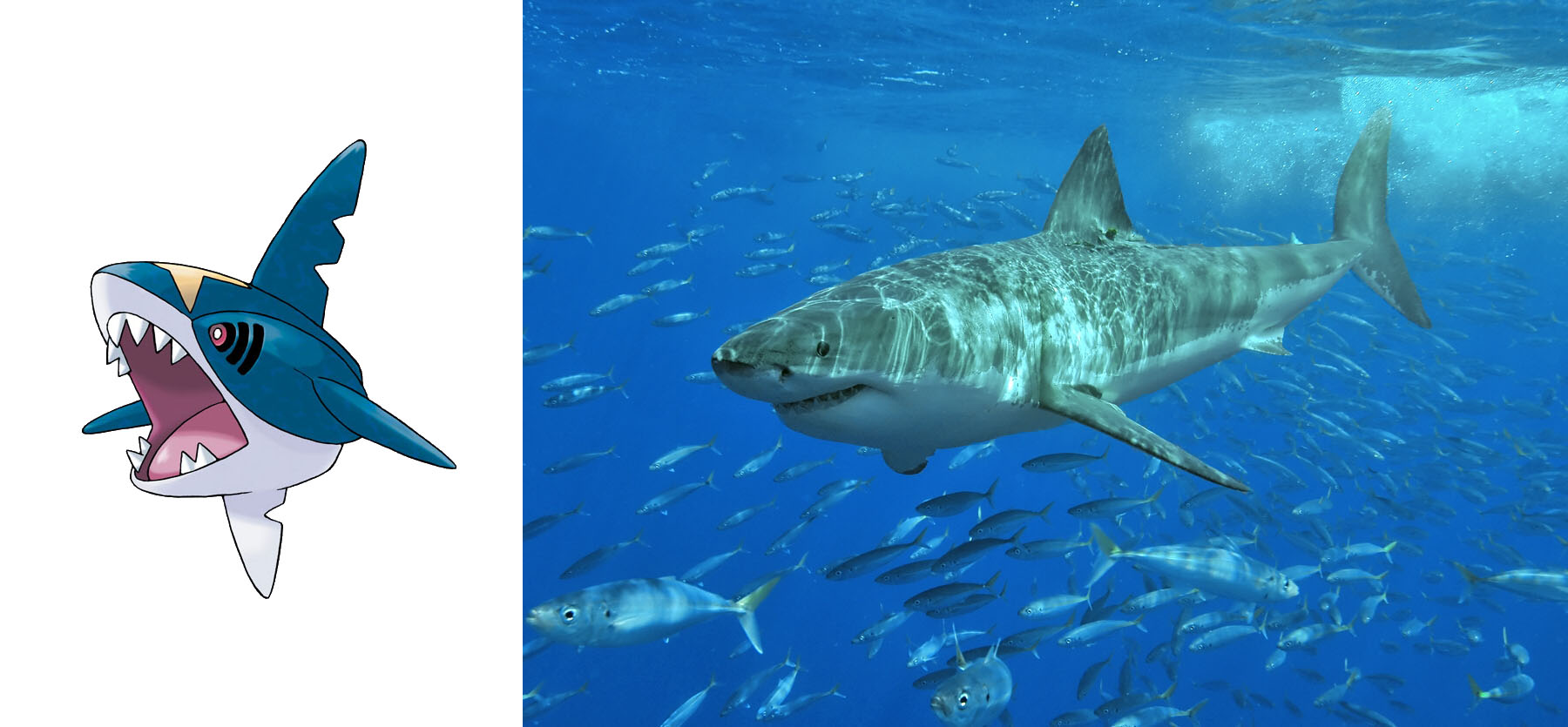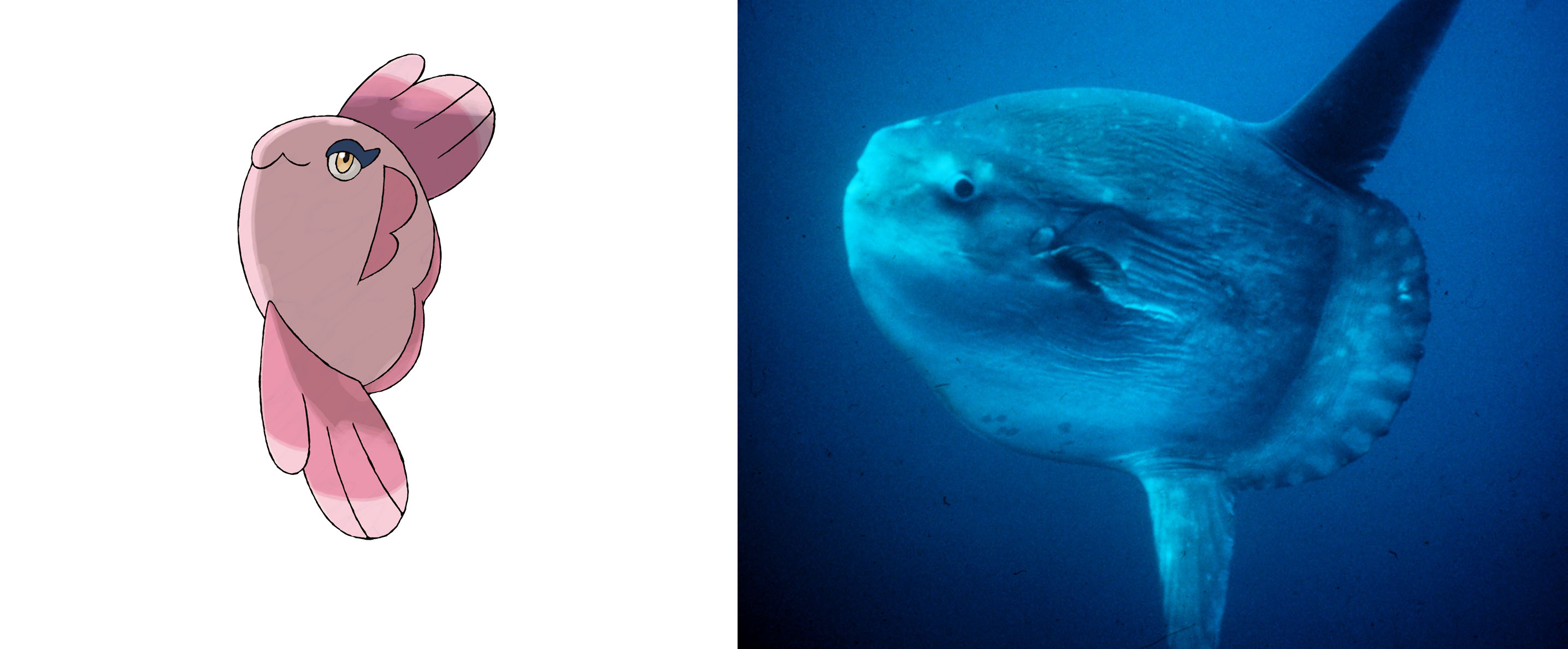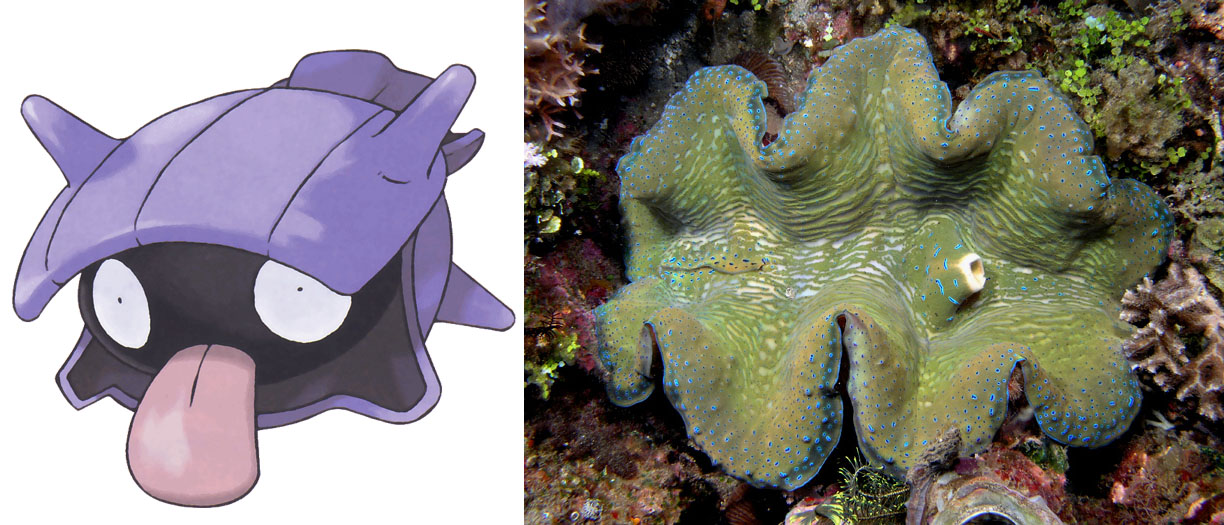Pokémon hold a special nostalgic spot in my heart. I grew up playing the games, watching the shows, and collecting all the trading cards I could get my hands on. I certainly remember thinking as a kid – how did they come up with all these Pokémon? There are 718 as of Pokémon X and Y, each special and unique. But as I got older, I came to realize just how closely the world of Pokémon mimics the biodiversity of our planet, showcasing hundreds of the species found throughout the globe. In other words, as children a lot of us were inadvertently exposed to many animals, along with some of their real world adaptations.
So, to celebrate the release of Pokémon X and Y, the Sizing Ocean Giants Team decided to take each of our species, and see how they stack up to their Pokémon counterparts. Would you rather have the Pokémon or the real life giant on your team? That’s up to you to decide.
GREAT WHITE SHARKS VS. SHARPEDO: (Lindsay Gaskins)
The shark of the Pokémon world is undoubtedly Sharpedo, bearing the characteristic teeth, yet an uncharacteristic overall shape compared to our cartilaginous friends. Without a tail, eyes directly adjacent to the gills, and a large yellow X emblazoned on its forehead, this is definitely not your typical shark.

The Pokédex entry indicates that Sharpedo uses jets of water to move up to 75 mph, which is highly impressive. To give you an idea of how fast this is underwater, 50 mph is enough to generate a pressure wave that can stun or kill fish. This is a strategy used by the thresher shark with its long, whip-like tail. However, Sharpedo supposedly can’t swim very long distances, likely due to their large energy expenditure to move so fast.
In comparison, Great White Sharks (Carcharodon carcharias) can not move as quickly, topping out at 25 mph, but they can swim thousands of miles a year. According to the stats in the video games, Sharpedo is 6 feet and 200 pounds, the size of a hefty person. Great Whites, however, put Sharpedo to shame. At up to 20 feet and 5,000 pounds, they are over 3 times as large and 25 times as heavy!
Sharpedo possesses some moves that are relatively accurate for a shark, with moves such as slash, crunch, agility, bite, and my personal favorite, scary face. I can’t vouch for ice fang, aqua jet, or screech as being as accurate, but they certainly paint an interesting picture of this aquatic Pokémon. The moves a Great White Pokémon could learn would likely be similar, yet have more power and accuracy than Sharpedo’s. With the ability to smell a single drop of blood in a million drops of water, and a bite force of 4,000 pounds, I’d definitely want a Great White Shark on my team.
MOLA-MOLAS VS. ALOMOMOLA: (Catherine Chen)
Alomomola is an awkwardly pink and eye-linered hybrid of a heart and an ocean sunfish (Mola mola).

Contrary to its appearance, the Mola is cooler than you might think – maybe even more than Alomomola. First off, it’s way larger than Alomomola (a measly 4 ft and 70 pounds), at up to 10 feet in length and over 5000 pounds. So if Alomomola had the same specifications of an actual Mola, it would be five times the weight of a Snorlax!
And in real life, Alomomola’s special healing membrane would be a lot more likely to actually infect a hurt Pokémon than to cure it. Molas have an unusually thick layer of skin covered in disgusting mucus and more often than not, a whole ton of parasites. They’re known to be one of the most heavily parasitized fish species, so I wouldn’t want to be wrapped inside their mucus. But it is pretty cool! Just think: Alomomola could be impervious to any attacks that are parasitic, rendering mega drain or leech life useless!
And with an average catch rate of 75, Alomomola is pretty much in the middle. But turns out that Molas are a lot more common than that: they’re bycatch in pretty much every ocean of the world, including a mind-boggling 90% of the tuna catch in the Mediterranean in the 90s. That’s a lot of wasted fish!
GIANT CLAMS VS. SHELLDER: (Frank Lee)
Also existing in the fantastical realm of Pokémon is Shellder, a black pearl encased in a spiky, blue-violet bivalve shell.

Shellder is a creature vitally important in the evolution of symbiotic relationships, much like the ocean giant Tridacna gigas (giant clam), the largest bivalve in the real world. Shellder is capable of attaching itself to the head or the tail of a Slowpoke, evolving into a Slowbro or a Slowking. In both evolutions, Shellder undergoes a metamorphosis into a spiral cone, much like the shell of another ocean giant, the Australian trumpet snail or Syrinx aruanus. Shellder, like the clam it is, has a soft, tender body but its shell is almost impenetrable. Shellder is also capable of learning the moves Withdraw (which raises defense) and its signature move, Clamp (which deals damage). T. gigas, like Shellder, is also capable of withdrawing by clamping down its shell, but once the giant clam has reached its maximum size, it is typically unable to completely close its shell due to its massive size.
Resources:
Sample, Ian (2013) Thresher sharks use their tails like bullwhips to kill or stun prey. The Guardian. Accessed Oct. 28, 2013.
